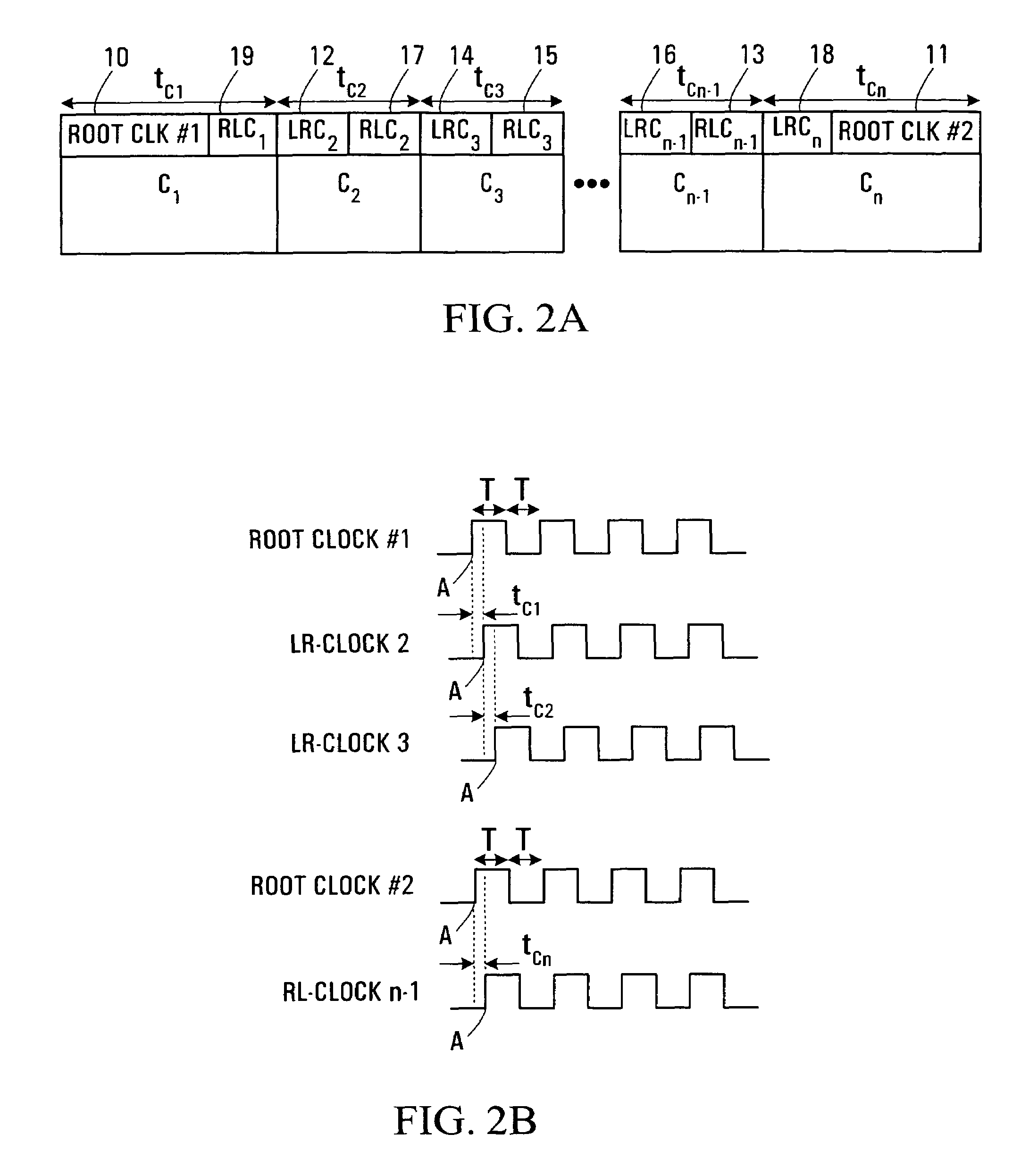Wavefront clock synchronization
a wavefront clock and synchronization technology, applied in the field of timing on integrated circuits, can solve the problems of large propagation delay of electronic signals within large integrated circuits, complex problems, and uneven effect of signal propagation in the area of the effect of the propagation of signals
- Summary
- Abstract
- Description
- Claims
- Application Information
AI Technical Summary
Benefits of technology
Problems solved by technology
Method used
Image
Examples
Embodiment Construction
[0034]With reference to FIG. 1A, a row of integrated circuit cells timed according to one embodiment of the invention using one root clock 10, is described. The root clock 10 originates in cell C1 in which there is an associated propagation delay tC1. This means that the root clock signal upon reaching the rightmost boundary of cell C1 is out of phase (in time) with the source of the root clock signal by a delay or skew of tc1. Furthermore, since data moving across the cell also experiences substantially equivalent propagation delays to those experienced by the clock signal, the data signals will also be out of phase with their sources. Thus, synchronizing a clock in cell C2 or other cells to the root clock 10, at its source, causes the data and clock signals to move out of phase with each other. According to the embodiment depicted in FIG. 1A, the clock signal within cell C2 is deliberately set to be out of phase with the source of the root clock 10 by a time tc1 corresponding to t...
PUM
 Login to View More
Login to View More Abstract
Description
Claims
Application Information
 Login to View More
Login to View More - R&D
- Intellectual Property
- Life Sciences
- Materials
- Tech Scout
- Unparalleled Data Quality
- Higher Quality Content
- 60% Fewer Hallucinations
Browse by: Latest US Patents, China's latest patents, Technical Efficacy Thesaurus, Application Domain, Technology Topic, Popular Technical Reports.
© 2025 PatSnap. All rights reserved.Legal|Privacy policy|Modern Slavery Act Transparency Statement|Sitemap|About US| Contact US: help@patsnap.com



